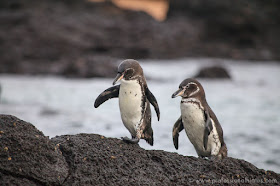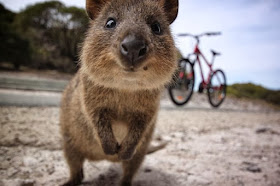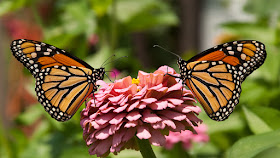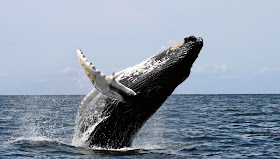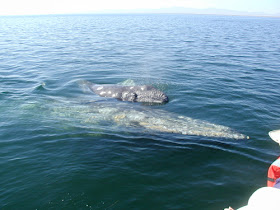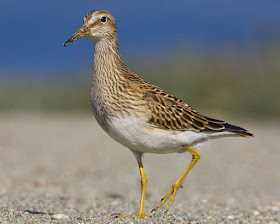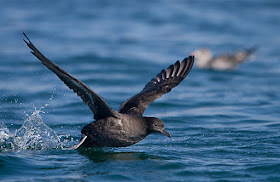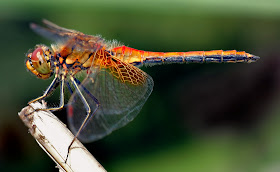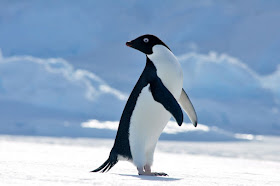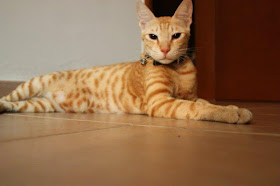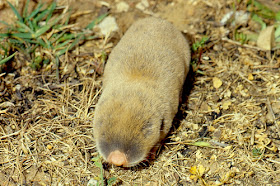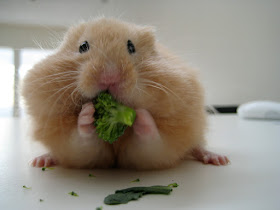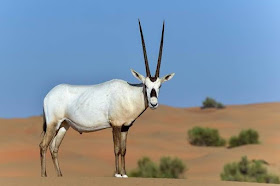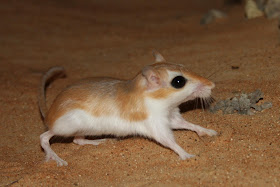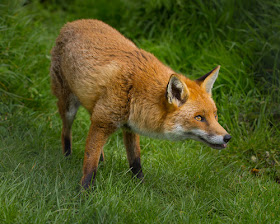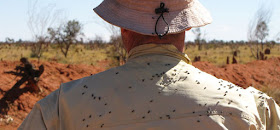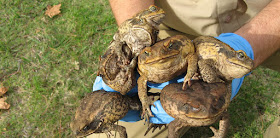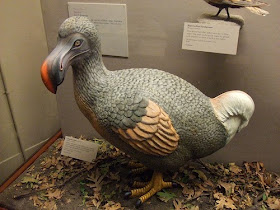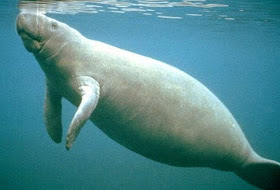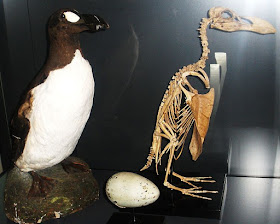Saturday, December 30, 2017
Protect animals in cold weather
With expected freezing temperatures approaching Acadiana this New Year’s weekend, the Lafayette Animal Shelter and Control Center (LASCC) urges pet owners to evaluate shelter conditions for outside pets. Providing proper shelter for outside animals is not only the right thing to do, it’s the law.
Within Lafayette Parish, owners are required by ordinance to shelter animals “from the elements so as to prevent unnecessary or unjustified pain or suffering.”
Specifically for outdoor dogs, sufficient bedding material or other means of protection from the elements must be provided when the weather is colder than what a dog of that breed and condition will comfortably tolerate and that will allow the dog to retain body heat. Bedding material must be kept clean and dry.
Monday, December 25, 2017
Care for all animals this festive season
South Africans are asked to be sensitive, compassionate and to exert kindness throughout the festive
season with regard to animals — all animals.
One focus at this time of year is the role of food in celebrations.
Consumers are asked to be responsible and to be aware of “production methods” so that their choices
are informed and compassionate, generating demand and growth for humanely produced foods.
The excessive heat and the drought continue and affect animals.
The NSPCA asks that reports of suffering are submitted timeously.
This not only relates to animals on farms but to working animals including so-called guard dogs who
may be suffering on duty in adverse weather conditions.
“Compassion comes in all forms and we ask for consideration towards all creatures and the promotion
of responsible behaviour.
“Choose activities that do not exploit animals in any way.
“Even if an animal may not be harmed, we ask people to consider if petting lion cubs is ethical and to
look at the bigger picture.
“This is just one example,” said Christine Kuch, from the NSPCA.
Above all, South Africans are asked to leave animals out of any festivities or promotions.
“It is of grave concern that a ‘competition’ has come to light with a live sheep as a prize.
“Over and above the welfare concerns are the moral issues and what this demonstrates regarding the
‘value’ of animals.
“They are not commodities and this includes the age-old appeal not to give live animals as gifts,” Kuch
said.
The National Council of SPCAs and the SPCA movement operate throughout the festive season.
It is the time of year when resources are stretched.
Staff continue to undertake routine duties of response to information involving alleged cruelty, neglect
or abuse of animals, matters which escalate at this time.
There is response to emergencies and also ensuring that there is provision of care to all animals.
This includes animals in “captive facilities” including laboratories.
“Please ensure that any animals you may have are given the best of care.
“Make sure their vaccinations are up to date which is a condition of reputable boarding facilities, as
well as a basic precaution to ensure the animal’s well-being.
“It is essential that their every need is catered for whether you are with them or away during this
period.
“Also include a back-up plan in case of injury, illness or any other unforeseen eventuality,” Kuch said.
The public is urged to take a responsible route when adopting animals.
This is where warnings are issued especially regarding online purchasing of pets.
So many are advertised and so many problems arise not only in welfare terms but also documented
cases of scams.
“Offering to meet someone in a car park to hand over an animal ought to send out warning signals.
“Far too often, people approach the NSPCA for assistance, having paid upfront or given cash without a
receipt, only to find the animal is in extremely poor health and they are unable to trace the seller.
“We recommend microchip identification as the ideal gift if an animal does not already have this form
of permanent tamper-proof identification which is also proof of ownership,” Kuch said.
Carry the number of your local SPCA with you on your cellphone.
Even if this is not the appropriate SPCA, they can forward the information quickly.
Above all, please report concerns regarding abused, neglected or cruelly treated animals by phone.
Every SPCA has an all-hours emergency number.
Emails and Facebook cannot be monitored around the clock and time lost in terms of response means
that an animal has suffered.
The identity of an informant is always kept confidential.
Saturday, December 23, 2017
Animal accidents cost millions
They might be man's best friend but dogs have been involved in 11,741 accidents where people claimed an injury through the Accident Compensation Corporation.
The accidents happened over 12 months, from November 2016 to October this year. In total ACC accepted 55,472 claims related to animals, costing $12.5 million.
According to figures released to the Herald under the Official Information Act, there were also more than 28,000 insect accidents, 5328 injuries caused by cats, 4750 injuries from spiders, 2687 related to horses, 1561 for cattle and 89 accidents involving deer.
Puncture wounds, stings, and lacerations were the most common type of injury caused by an animal, with 35,655 claims.
The next was an occupational disease or infection, with 11,436 claims.
Some of the more serious accidents included 12 people who needed amputation or surgery to remove an eye, four people who suffered deafness, 112 people who sustained a concussion or head injury, and five people who had a nervous shock or mental injury.
Other types of accidents claimed for incidents involving animals included burns or scalds, 5; fractures and dislocation, 839; dental injuries, 608; inhalation and ingestion accidents, 983 and soft tissue injuries, 32.
Children had the highest number of accidents with 8320 claims for zero to 4-year-olds, followed by 5-9-year-olds with 6679 injuries.
More than 750 people aged 85-plus also suffered accidents involving animals, and overall 30,963 claimants were female and 24,509 male.
The total cost of treatment was $7.49m broken down by:
• Medical $6.7m;
• Hospital $571,106;
• Dental $220,193.
ACC chief customer officer Mike Tully said dog-related injuries often happened while the canine pets were off leash and at the park.
"A number of those accidents happen when dogs are outdoors enjoying the freedom, going for a good run, picking up speed and banging into somebody.
"An injury can occur, particularly around the knee."
Tully warned walkers and dog owners to be wary the animals often don't stop in time.
"Just be careful of dogs running toward you, they can be a bit slow to brake. They just don't move.
"Therefore as the dog owner, trying to be conscious of that, that unless your dog is going to listen to you that you may be better sometimes saying to the person where your dog is running to, please step aside or get out of the way."
Tully said people needed to be aware it did not take a big pooch to cause an accident with serious injury.
"Once they've got speed on and they connect with a human being, big or small they can cause some damage."
His warning around horses, cattle and other big animals was to use common sense.
"If you're a farmer, you're around horses, you're around cattle, you generally know how to handle yourself and the stock.
"If you're new to that... I have seen people think 'Well I can pat the horse so therefore I could climb over and get a photo' etc but if you don't know the animal you're dealing with we'd really ask that you keep your distance and use common sense."
Tully said the number of injuries from animals were not increasing but there was often a fluctuation in dog-related injuries.
He issued a warning for pet owners over the Christmas holidays.
"Kids are excited and when kids are excited dogs can get excited. Just be aware of the odd nip and scratch that could occur and we do see that come through ACC at this time of year."
Saturday, November 18, 2017
Secret Lives of Animals
In Africa, a species of termite builds columns of mud and spit, sometimes up to 18 feet tall. Paper wasps with brains the size of two grains of sand can recognize the faces of their fellow wasps. On the seafloor, dozens of unique marine bacteria, worms and crustaceans make their homes within rotting bones of dead whales.
Why do animals do such strange things? In this issue, scientists offer answers to this question. They also reveal surprising discoveries about how animals think and feel. And they explain how some of the oddest creatures ever to roam the earth came by their weird traits.
The animal behaviors that seem peculiar to us humans actually make a lot of sense for survival. Take, for instance, those termites. It turns out that their mud house is climate-controlled—the CO2 from the bugs' respiration rises out of the top of the mound, whereas at night the outer chambers of the column let in oxygen to keep the critters from suffocating. Other insects have crueler survival tactics. The female jewel wasp injects venom directly into a cockroach's brain to paralyze it, preserve it and feed it to her unborn spawn.
Humans tend to think that we are unique in our intelligence, social skill and depth of emotion. Yet we think too much of ourselves. The humble chicken, for example, is strikingly clever. Males secretly subvert the pecking order—going behind the back of their more dominant rivals to court females. In the horse world, mares seem to provide the social glue to the herd—a job once attributed to stallions. Some wild animals even show what could be construed as grief: dolphins will carry the body of their dead calves with them, and elephants will revisit the bones of lost herd members for years after they die.
And then there are animals that are simply jaw dropping. The prehistoric bird Pelagornis sandersi, with its 24-foot wingspan—more than twice the wingspan of the albatross—was an unparalleled ocean soarer. And deep in the tunnels of wetlands, a tiny mole with a fleshy, pink nose the shape of a star devours up to five items of prey a second.
Enjoy this tour of the secret lives of animals. My guess is that you will feel somewhat at home, even among the strangest creatures. After all, we are animals, too.
Friday, November 17, 2017
How Animals and Plants Weather Hurricanes
Studies suggest not all critters fare well in extreme weather, though some thrive.
Hurricane Maria decimated Puerto Rico. With sustained winds of 155 miles per hour, much of the US territory has been without power for weeks. Many residents lack running water, hospitals have been limping along on backup generators, and the island’s agriculture has been essentially flattened. The toll on local wildlife remains far from appreciated, but it’s clear from Maria and other hurricanes that some animal populations suffer from big storms—while others thrive.
Endangered animals are of paramount concern to conservation biologists. When a few key deer (Odocoileus virginianus clavium) were spotted on Big Pine Key in Florida after Hurricane Irma swept through, it prompted a sigh of relief. Likewise in Puerto Rico, one native islander, the endangered Puerto Rican parrot (Amazona vittata), seems to have fared “surprisingly well” after Maria, Fish and Wildlife Service (FWS) spokesman Mark Davis tells The Scientist.
Vibrant and vocal, these birds are rare in the wild. A. vittata were first listed as critically endangered in 1968, with their numbers dipping to 13 in less than a decade. Since then, conservationists have been working tirelessly, breeding the birds in captivity and releasing them into the wild, to boost their numbers. In 1989, 47 individuals flitted about the island, with at least 12 forming breeding pairs.
Then, Hurricane Hugo hit that year, ravaging the island and the birds. The population fell to just 22. It rebounded and then again, devastating storms in 2015 stripped the forest of food and the birds’ numbers plummeted. Now, Hurricane Maria has marked the island, but the birds’ numbers, at least those in captivity, seem to be stable. Damage to the aviaries caused the death of a few birds, probably from heat or the stress of being moved to different cages, Michelle Eversen, a biologist and program coordinator for FWS in the southeast U.S. and Caribbean, wrote to Davis. In the wild, “we don’t know how many survived or if they are having difficulty finding food after the storm,” Eversen reported. But researchers working with the captive birds have seen wild Puerto Rican parrots near two of the aviaries on the island—a hopeful sign.
Strategies to survive
Not all birds have been so lucky. A masked booby, probably blown off course as Hurricane Jose worked its way up from the tropics in September, landed on the shores of Massachusetts recently. Workers at Wild Care Cape Cod, a wildlife rehabilitation facility in Eastham, tried to take care of the bird, but it was reported dead October 3.
Birds, like us and other animals, take a few different strategies in the face of storms. Some leave before it hits. They can sense drops in barometric pressure, so they know when to go. Others fly straight into a storm, though tracking birds with satellite tags has shown that the success of that strategy is mixed. Still other birds, such as the Puerto Rican parrots, shelter in place. What researchers don’t yet know is how well these tactics work.
“There aren’t a huge number of studies about what animals do in hurricanes,” says biologist Helen Bailey of the University of Maryland Center for Environmental Science. The studies don’t exist because they are hard to do; surveying animals in extreme weather isn’t really realistic.
Monday, July 31, 2017
7 tips for healthy fair animals
1. Sanitize
Keep animals’ pens at a fair or show as clean and dry as possible. Be sure to dispose of waste, used bedding and uneaten food regularly.
2. Limit contact
Do not come into contact with or enter the pens or stalls of animals from other farms. If contact cannot be avoided, wash hands and disinfect clothing and shoes before returning to your own animals.
Do not allow your animals to come into contact with animals from other farms and avoid sharing equipment with other exhibitors. Limiting contact between animals, exhibitors and equipment from different farms reduce the risk of contamination.
3. Feed and water
Provide clean water and feed to animals through the show or fair. Do not make changes to the feed or water type or sources during an exhibition. Also, keep unused feed, foraging and equipment covered to avoid contamination.
4. Avoid interspecies-contact
House and transport animals according to their species. Goats or sheep and cattle, in particular, should not be transported or housed together because of disease risks.
If possible, also limit traffic between exhibitors of different species or wash hands and change clothing before handling a different species.
5. Disinfect
Do not use the same equipment for animals at an exhibition and animals at the farm. Disinfect all equipment before bringing it back to the farm. This helps to protect animals that remain at the farm from contamination from the show.
6. Dispose
Dispose of any leftover bedding, feed and forages after the exhibition either at the show or at an appropriate site off the farm.
7. Isolate
After returning home from a show or fair, animals should be isolated from the rest of the herd for two-four weeks to avoid contamination. Monitor these animals for any signs of disease.
Even animals that do not appear to be ill right away can spread disease. Feed or care for animals who did not attend a show or fair before caring for animals who returned from a show or fair.
Sources: Preventing the spread of animal diseases — Applications for youth livestock shows by Rosie Nold, extension youth animal science specialist; David R. Smith, extension beef/dairy veterinarian, Michael C. Brumm, extension swine specialist, University of Nebraska Lincoln Extension; Livestock trailer safety, extension.org; Biosecurity checklist for livestock exhibitors, Washington State Department of Agriculture; Keeping your livestock show animals healthy, The Poultry Site; Keeping animals healthy, Penn State Extension.
(Farm and Dairy is featuring a series of “101” columns throughout the year to help young and beginning farmers master farm living. From finances to management to machinery repair and animal care, farmers do it all.)
Saturday, July 29, 2017
The US parrot that mimics other animals
Einstein, an African grey parrot that lives in a zoo in Tennessee, mimics a dog's bark, a wolf’s cry and more.
Tuesday, July 4, 2017
Tasmanian Devil
The Tasmanian devil is NOT just a Looney Tunes cartoon character! It is a most unusual mammal, found only on the island state of Tasmania, a part of Australia. It is also a marsupial, related to koalas and kangaroos. Why the “fiery” name and reputation for an animal the size of a small dog? Devils are black in color and are said to have fierce tempers! Their oversize head, neck, and jaws are well suited to crushing bones. They make eerie growls while searching for food at night. And when a group of devils feeds together at a carcass, harsh screeching and spine-chilling screams can be heard. Tasmanian devils have behaviors that may seem odd or scary to us, but they have a different meaning in devil society:
A mouth that opens quite wide - While the famous gape, or yawn, of the Tasmanian devil looks threatening, it is more likely to express fear and uncertainty than aggression.
A foul odor - There is the foul odor that a devil releases, but this is produced under stress, not when the devil is calm and relaxed.
Fierce snarls and high-pitched screams -These are used to establish dominance at feeding time around a carcass.
A strong sneeze - No, they aren’t catching a cold! Instead, the sneeze may come before a fight between devils. These are mostly spectacular bluff behaviors, all part of a ritual to lessen any real fighting that may lead to serious injuries. After a nose-to-nose confrontation during which their ears flush red! one or both animals usually back down.
The Tasmanian devil is NOT just a Looney Tunes cartoon character!
It is a most unusual mammal, found only on the island state of
Tasmania, a part of Australia. It is also a marsupial, related to koalas
and kangaroos. Why the “fiery” name and reputation for an animal the
size of a small dog? Devils are black in color and are said to have
fierce tempers! Their oversize head, neck, and jaws are well suited to
crushing bones. They make eerie growls while searching for food at
night. And when a group of devils feeds together at a carcass, harsh
screeching and spine-chilling screams can be heard. Tasmanian devils
have behaviors that may seem odd or scary to us, but they have a
different meaning in devil society:
A mouth that opens quite wide— While the famous gape, or yawn, of the Tasmanian devil looks threatening, it is more likely to express fear and uncertainty than aggression.
A foul odor— There is the foul odor that a devil releases, but this is produced under stress, not when the devil is calm and relaxed.
Fierce snarls and high-pitched screams— These are used to establish dominance at feeding time around a carcass.
A strong sneeze— No, they aren’t catching a cold! Instead, the sneeze may come before a fight between devils. These are mostly spectacular bluff behaviors, all part of a ritual to lessen any real fighting that may lead to serious injuries. After a nose-to-nose confrontation—during which their ears flush red!—one or both animals usually back down.
A mouth that opens quite wide— While the famous gape, or yawn, of the Tasmanian devil looks threatening, it is more likely to express fear and uncertainty than aggression.
A foul odor— There is the foul odor that a devil releases, but this is produced under stress, not when the devil is calm and relaxed.
Fierce snarls and high-pitched screams— These are used to establish dominance at feeding time around a carcass.
A strong sneeze— No, they aren’t catching a cold! Instead, the sneeze may come before a fight between devils. These are mostly spectacular bluff behaviors, all part of a ritual to lessen any real fighting that may lead to serious injuries. After a nose-to-nose confrontation—during which their ears flush red!—one or both animals usually back down.
Wednesday, June 28, 2017
Watch a rattlesnake plan attack by clearing path for its strike
The snakes checked out the area for signs of prey and then, once they had identified a burrow, forcibly jerked their heads and necks to move surrounding grass (see video, below). The hunters proceeded to wait for their prey in an ambush spot for up to 3 hours.
Perhaps the snakes are modifying their habitat to try and increase their hunting success
Friday, June 23, 2017
World’s smallest deer: Philippine Mouse Deer
This is the smallest hooved mammal – the Philippine mouse deer, locally known as Pilandok, it’s only about 40 centimeters tall, which makes it also the cutest deer in the history of ever. That said, it’s not technically a member of the deer family, but it’s freaking close enough for me.
Thursday, June 22, 2017
Seagull Falls Into Tikka Masala Curry, Comes Out Looking Orange
A hungry seagull was left bright orange after falling into a vat of waste curry outside a food factory on Monday.
The bird was apparently trying to nab a piece of chicken from the container of tikka masala when it ended up falling in.
The animal was taken from the site in Wales to Vale Wildlife Hospital near Tewkesbury where vets cleaned it up and made sure it wasn’t injured.
“The strong curry aroma actually hit us before we opened the box,” veterinary nurse Lucy Kells told Solent News. “It was absolutely overwhelming and I thought ‘that smells fantastic’.”
“We had to give him a shower and clean him with washing up liquid. Surprisingly, he was actually very well behaved. The gull is doing great now - he still smells a little of curry, but he is now much whiter.”
It’s thought the bird became trapped because the curry was too thick for him to fly away.
The distinctive colouration caused by the turmeric led to people of Facebook dubbing him “Gullfrazie”.
He’ll now be kept in a cage to regain his strength, then transferred to an outdoor aviary to redevelop the waterpoof coating on his feathers.
Wednesday, June 21, 2017
Kitten Sees Itself In The Mirror For The First Time
The world is a strange place for a newborn kitten - everything is huge and confusing, and you learn new things everyday.
This little cutie named Wiske had an absolutely adorable reaction to her first time seeing a mirror, when she clearly couldn’t tell what was going on.
YouTube Simon Newport shared the footage of the feline newborn last week, and later uploaded an ‘Inception’-style follow up of Wiske watching herself watching herself in the mirror. Confusing, but very cute.
Saturday, June 17, 2017
Island fox of California
The island fox is a small fox that is native to six of the eight Channel Islands off the coast of California
California. These include Santa Cruz, Santa Rosa and San Miguel islands.
Its diet in the remote areas consists of mice, crickets, beetles, earwigs and fruits from plants such as cactus. Campers are warned not to feed the cute critters.
The island fox is one-third smaller than its mainland ancestor, the grey fox, at 12 to 13 inches in height and four to five pounds in weight.
It is the only carnivore unique to California. Thanks to conservation efforts, the IUCN Red List of Endangered Species now lists the island fox as near threatened from endangered.
Friday, June 16, 2017
Tuatara: New Zealand reptiles
It has survived ice ages, volcanic eruptions and the intrusion of humans on its South Pacific island home, but New Zealand's last survivor of the dinosaur age may become extinct due to global warming.
Mounted with spiny scales from head to tail and covered by rough, grey skin that disguises them among the trees, the tuatara is one of the world's oldest living creatures.
But the lizard-like reptile is facing increasing risk of extinction from global warming because of its dependency on the surrounding temperature, which determines the sexes of unborn young while still in their eggs.
So named by New Zealand's indigenous Maori people because of the spines on its back, the tuatara is the only survivor of its species of reptile that flourished during the age of the dinosaurs, some 200 million years ago.
It can grow up to 20 inches and weigh up to 2.2 pounds and like its reptile relative, the turtle, the slow-moving tuatara can live for more than 100 years, feeding mainly on insects.
But scientists say its long life span as well as its four-year breeding cycle - relatively slow for a reptile - will make the adaptation process more difficult.
Thursday, June 15, 2017
Galapagos Penguin - Endangered Species
Galapagos penguins are the rarest and most endangered penguin species in the world and the only one that can be found at the equator.
Unlike most cold water penguins, they have several adaptations that allow them to tolerate the warmer climate of Galapagos, with their ability to pant like a dog being one them.
They also have less body fat and fewer feathers than cold-weather penguins allowing them to lose body heat more efficiently. Their smaller size also means they don't need to eat as much to survive
One of the reasons for their endangered status is that limited options for nest sites exist in the Islands.
Many nests used 40 years ago either no longer exist, are used by marine iguanas, or now get flooded.
The WWF lists the Galapagos penguin as endangered with only 2,000 thought to exist in the wild.
Tuesday, June 13, 2017
Amazing footage shows frenzied piranhas devouring a bull's head as it is held in the water
This is the gruesome moment a bull's head was ripped to the bone by a shoal of bloodthirsty piranhas.
The fish tore into the animal's flesh after it was dipped into the murky waters of the Amazon river by a local man standing on a gondola.
The daredevil raised the head out of the water to reveal the fish gorging on the meat just inches away from his unprotected hands.
Piranhas can attack humans too but thankfully did not decide to take a bite out of him.
The footage of the extraordinary feeding frenzy was posted on YouTube, where it has been viewed more than seven thousand times.
Every year hundreds of piranha attacks are reported throughout South America.
The most notable piranha incident in recent times came in Argentina in December 2013, when an attack by a school of hungry piranhas saw 70 people injured and several children lose fingers and toes.
Monday, June 12, 2017
Quokka
Most marsupials live in Australia, constraining their range a bit already. But the quokka is only found in the southwest corner of Australia and a few nearby islands, giving it an even smaller area to live than its cousins.
Quokkas are fearless and curious of humans, which can lead to some unfortunate interactions with less-than-kind humans who come into contact with these puffy cheeked critters. Even some more altruistic people can mess up a quokkas life by feeding them. The quokka survives on vegetation not just for food, but for water.
Interestingly, the quokka has taken root in Two Peoples Bay Nature Reserve, a reserve initially set up to protect noisy scrub-birds. Since then, the Gilbert's potoroo has taken root. This species is possibly the most endangered marsupial in the world. Thus, one of the most vulnerable marsupials lives among one of the most endangered.
Saturday, June 10, 2017
Helium drinks will bring out the Chipmunk in you!
Still drinking them regular (AKA boring) alcohol drinks? You really should try helium infused beer or wine with your friends and guaranteed it will help you kick the blues away a whole lot faster! Just check these videos out for reference!
Don't forget to tag your besties who'd love to enjoy this with you!
Tuesday, June 6, 2017
9 animals with extremely long migrations
Animals migrate for a lot of different reasons. Some travel long distances on a seasonal basis for food, finding their meal of choice hundreds and thousands of miles away. Others make their journeys to find mates while still others do it to avoid unfavorable weather, staying just ahead of the winter line as it creeps down from the poles every year.
The length of animal migrations vary as much as the reasons for doing it. Most migrations are measured in miles, though some animals like the golden jellyfish might travel just a few hundred meters on their daily migration, following the sun. Some kinds of plankton start their day hundreds of feet down the water column before coming up nearer the surface while the sun is out. At night they migrate back down to lower depths.
We wanted to focus on those species that undertake the really long migrations. Which are the most well-traveled animals in the world? Which organisms are traveling thousands, and even tens of thousands, of miles in pursuit of a better meal, warmer weather, or a chance to find a mate and reproduce?
We scoured the globe far and wide and bring you these nine animals with seriously long migrations.
Monarch butterfly
Of all the animals listed here, the monarch butterfly’s total migration is the shortest, at just a few thousand miles at most. But what they lack in overall distance, they more than make up by how they do it. See, the thing is, monarch butterflies only live for a couple of months. Their migration can take six months. This means that it takes two to three generations of butterflies for each migration! Somehow the knowledge of how to travel thousands of miles is embedded in their DNA and is finely attuned to allow them to pick up the path, no matter where they are born along it.
Monarch butterflies generally head south around August and north in the spring. Their Mexican wintering grounds were only discovered in the '70s and entomologists are still unsure about the biological mechanisms that allow for their multi-generational migration.
Whales
We decided to lump whales together into one large category because otherwise half the animals listed would be one kind of whale or another. Whales have the benefit of being massive and living in a medium — the wide open ocean — that is conducive to long-distance travel.
Humpback whale
Humpback whales are one of the largest animals in the world and can grow longer than 50 feet in length. Humpback whales were nearly driven to extinction by whaling, but a 1966 moratorium on hunting the species has helped their numbers recover. They are solitary animals and spend their summers eating in cold polar waters. In the winter, they migrate towards the equator to find a mate and breed. In all, your typical humpback whale can put in more than 6,000 miles of travel in a year.
Gray whale
Gray whales are another huge denizen of the deep and can grow to be nearly as large as the humpback. They too have proven to be attractive targets for whaling harpoons and their estimated population is just north of 20,000. Gray whales are recognized as having one of the longest migration routes for a mammal and can travel 10,000-12,000 miles in a year, spending the summer feeding in the waters between Alaska and Russia and mating and calving down around the Baja peninsula.
Southern right whale
The range of the Southern right whale extends from the coast of Antarctica to the southern most reaches of South America, Africa and Australia. They feed in the Southern Ocean in the summer and then migrate north, like the humpback and gray, to breed. There is still a lot we don’t know about the migratory grounds of the Southern right whale, but scientists have documented one way journeys of 2,750 miles (double it to get a round trip total of 5,500 miles).
Arctic tern
Birds are another type of animal well known for long migrations. Like whales, they live in a medium, the open sky, made for migrating. Birds take advantage of this by churning in some big miles. The Arctic tern, one of the longest migrators on the planet, can travel a mind boggling 44,000 miles in a year (Earth is just under 25,000 miles around). They do this by making a trip from their summer breeding grounds in the Arctic all the way to the Antarctic to winter, and back, every year. Multiply that by the roughly 30 years an average tern lives, and you can get more than 1 million miles in a lifetime. Too bad they don’t get frequent flyer miles for that.
Pectoral sandpiper
You wouldn’t think that the pectoral sandpiper would be a champion migrator just by looking at it — the small bird’s average wingspan is only around a foot and a half. But the pectoral sandpiper puts in some serious miles on the wing — more than 18,000 in a year. They travel annually from breeding grounds in the northern hemisphere (Alaska, Canada, and northern Asia) to the Southern Hemisphere (South America and Australia).
Sooty shearwater
The sooty shearwater is a large bird, with a wingspan more than three feet wide. They make their mammoth yearly migration of more than 40,000 miles by circling between the Northern and Southern Hemispheres. In 2005, scientists tagged 19 sooty shearwaters and watched in amazement as they flew huge distances in pursuit of warm weather and productive feeding grounds.
Globe skimmer dragonfly
The globe skimmer dragonfly is well named. One of the most widely distributed dragonfly in the world, they have been observed making journeys more than 2,300 miles and scientists think they could put in more than 11,000 miles of travel in a year. Not bad for an insect just a couple of inches in length.
Adelie penguins
Like all penguins, Adelie penguins spend their lives plying the waters of Antarctica. This curious little bird splits its year between breeding and feeding grounds that can require more than 10,000 miles of travel of transit. In 2003, penguin researchers tagged two colonies living on Antarctica’s Ross Island and found average birds migrating a little more than 8,000 miles with the longest route being nearly 11,000 miles.
Monday, June 5, 2017
7 Animals Found Only in the Middle East
The Middle East is home to many animals that you cannot find anywhere else in the world, that have evolved and adapted to the unique environment of the region. Some of the species are so rare they are actually endangered. Here’s a look at 7 mammals prevalent only to the region:
1. Arabian Mau: These frisky felines are descendants from wild desert cats, which are well- adapted to hot Middle Eastern temperatures. Their ears, for instance, are long and stand upright in order to dissipate heat. But the most fascinating thing about the Arabian Mau, which can be found mainly in Kuwait, Qatar, Saudi Arabia and the U.A.E., is that it was thought to be a random street cat. It was only declared a legitimate breed in 2008!
2. Palestine Mole Rat: Also known as the Middle Eastern Blind Mole Rat, this rodent has been pestering Palestinian farms for hundreds of years. It can be found in Egypt, Iraq, Syria, Jordan, Lebanon Turkey and, of course, Palestine. The Palestine Mole Rat is also considered the best animal for lab testing and is used in cancer research, thanks to its powerful immune system.
3. Arabian Tahr: The Arabian Tahr, which is closely related to the wild goat, is an endangered species found mostly in the Hajar Mountains of Oman. They are well equipped to handle the high altitudes and the steep slopes with their rubber hooves, stocky builds and backward arching horns.
4. Syrian Hamster: Who knew that one of the most popular house pets originated from Syria? The Syrian Hamster, also known as the Golden Hamster was referred to as “Mister Saddlebags” in local Arabic due to the amount of food it can store in its cheeks. The Wild Golden Hamster population is quickly decreasing however, due to habitat loss.
5. Arabian Oryx: Qatar Airways’ mascot is known for its distinct, long straight horns and was nearly extinct in the 1970s. Fortunately, preservation efforts managed to reintroduce the antelope to the wild. The Arabian Oryx is mainly found in the deserts of the Arabian Peninsula.
6. Bunn’s Short-tailed Bandicoot Rat: This teeny tiny rodent can actually only be found in Iraq, and prefers the marshlands of the Tigris and Euphrates Valleys. It is considered an endangered species.
7. Cheeseman’s Gerbil: Named after explorer and military officer Colonel Robert Ernest Cheeseman, this medium-sized gerbil is about 22cm long, and is mainly found in the Arabian Peninsula, as well as southwestern Iran.
Thursday, June 1, 2017
5 Animals That Have Gone Wild in Australia
Australian scientists are looking to use a fish virus to control the exploding population of European carp that is damaging freshwater ecosystems in the country’s agricultural heartland. Biocontrol agents have been previously successful in controlling rabbit plagues. Scientists and lawmakers hope the koi herpes virus CyHV3 can do a similar job with the invasive fish known by most Australians as the “cockroach of the waterways.” But the country’s past experience of controlling so-called “alien” species has been mixed.
Here are five animals that have gone wild in Australia:
1. Rabbits
Rabbits were introduced to Australia in 1859 by a wealthy farmer who was eager to hunt them. The rabbits escaped and over the course of 70 years, they fanned out to cover most of the country—the fastest mammal invasion, according to government scientists. In 1950, scientists released the Myxomatosis virus which killed 500 million rabbits, though 100 million survived. Their numbers today are a fraction of pre-Myxomatosis levels, but rabbits still cause an estimated 200 million Australian dollars (US$149.2 million) in economic damage annually.
2. European Red Foxes
Like cats, foxes were introduced to Australia by settlers in the 1830s for hunting. They also spread quickly. Foxes are now found in all states except Tasmania and are a common predator in all areas outside the northern tropics. The fox is even seen in major cities and is blamed for numerous mammal extinctions or population declines. Controls include shooting and dropping poison bait from planes. But the fox population today still numbers more than 6 million.
3. Cats
Cats arrived with British settlers. Feral cats are now being blamed by scientists for a second wave of animal extinctions in Australia. With their population estimated at up to 23 million, these cats are believed to kill 75 million native animals each night, according to the Commonwealth Scientific and Industrial Research Organisation and the Australian Wildlife Conservancy, including birds, lizards and even small kangaroos. Scientists have tried biological control, but effective control requires trapping, fences and shooting.
Associated Press
4. Flies
An average cow drops up to 12 dung pads every day, according to government scientists. With more than 28 million cattle, this is a huge amount of dung and contributes to Australia’s fly plagues. Each pad can produce up to 3,000 bush flies and waving them away has become known as the “Aussie salute.” Since 1969, the country has imported dung beetles from Africa and southern Europe to break down dung, helping control disease and health hazards spread by flies.
5. Cane Toads
Toxic South American cane toads were introduced to Australia in 1935 in an effort to contain two types of cane beetles that were ravaging sugar crops. Imported from Hawaii by the government’s Bureau of Sugar Experiment Stations, the toads—which weigh up to 4 pounds—had no impact on the beetles. But they have quickly marched across Australia’s northern tropics, killing native predators and birds that aren’t used to their toxins.
Wednesday, May 31, 2017
7 Animals That You Won’t Believe Come From This Planet
Have you ever wondered what life on other planets might look like?
While images from Men in Black are probably running around in your head, there’s plenty of life already on earth that’s a little extra-terrestrial.
1. Matilda the alien cat.
The kitty-cat world’s answer to E.T.
But Matilda isn’t the only creature suited to life in a sci-fi movie – as these fantastic pics prove…
2. The Blobfish
Take the Blobfish. Bearing a startling resemblance to Flubber, it certainly wasn’t blessed with looks! That’s probably why it’s regarded as the world’s ugliest animal!
3. The Coffinfish
Found deep in the ocean is a sea toad that walks – literally. The Coffinfish is another that was abandoned when it came to the looks department, but its eerie appearance lends itself to something Will Smith might shoot as it leaps from a sewer!
4. The Axolotl
No this little creature isn’t a Pokemon, despite its magical appearance. The Axolotl wanders the sea floor near Mexico but its time on Earth is quickly running out as it is critically endangered.
5. The Seapig
Seapigs can be found roaming nearly all of the world’s oceans, but the chances are you’ll never actually see one as they live on the deep-sea floor. That’s probably a good thing given their potato-like appearance though.
6. The Shoebill Bird
Found in just a handful of locations across Africa, the shoebill bird is similar to a stork but could easily be mistaken as a fresh escapee from Jurassic Park.
7. The Giant Salamander
Completing our list is the largest amphibian left on the planet. The giant salamander can grow to be bigger than a person although its endangered status means finding one of that size is incredibly rare.
While images from Men in Black are probably running around in your head, there’s plenty of life already on earth that’s a little extra-terrestrial.
1. Matilda the alien cat.
The kitty-cat world’s answer to E.T.
But Matilda isn’t the only creature suited to life in a sci-fi movie – as these fantastic pics prove…
2. The Blobfish
Take the Blobfish. Bearing a startling resemblance to Flubber, it certainly wasn’t blessed with looks! That’s probably why it’s regarded as the world’s ugliest animal!
3. The Coffinfish
Found deep in the ocean is a sea toad that walks – literally. The Coffinfish is another that was abandoned when it came to the looks department, but its eerie appearance lends itself to something Will Smith might shoot as it leaps from a sewer!
4. The Axolotl
No this little creature isn’t a Pokemon, despite its magical appearance. The Axolotl wanders the sea floor near Mexico but its time on Earth is quickly running out as it is critically endangered.
5. The Seapig
Seapigs can be found roaming nearly all of the world’s oceans, but the chances are you’ll never actually see one as they live on the deep-sea floor. That’s probably a good thing given their potato-like appearance though.
6. The Shoebill Bird
Found in just a handful of locations across Africa, the shoebill bird is similar to a stork but could easily be mistaken as a fresh escapee from Jurassic Park.
7. The Giant Salamander
Completing our list is the largest amphibian left on the planet. The giant salamander can grow to be bigger than a person although its endangered status means finding one of that size is incredibly rare.
Tuesday, May 30, 2017
4 Animals We Ate To Extinction
4 Delicious Animals We Charbroiled Into Extinction - and 1 That Tasted Nasty But We Killed It Anyway
"Good to the last drop" proved to be a great slogan for Maxwell House coffee. But the "Good to the last existing representation of the species" tagline hasn't worked so well for these delectable creatures. Here are four animals that prove that slow and tasty never wins the race.
The Dodo
Bigger than turkeys and more naive than happy taxpayers, the dodo [wiki] didn't exactly have the best survival strategy on the block. Consider the evidence. Not only was the dodo a flightless bird, it also had tiny wings, a small tuft of curly feathers on its bum, and it laid only one egg a year. It's no wonder European sailors who landed on the shores of Mauritius in the early 16th century got a big laugh out of the clumsy bird, which, in addition to its previously lamented attributes, had absolutely no fear of man. The sailors also got quite a few meals out of the aves, even though they were said to be close to inedible (Dutch settlers called them walgvogel, or "disgusting bird"). No matter. Pigs, rats, and monkeys introduced to the island helped man kill off the bird by 1681. Which is why there aren't any Kentucky Fried Dodos today.
The Sea Cow
They were big, slow, tasty, and defenseless, all of which is a bad combination around a slew of hungry humans. A cold-water relative of the manatee and dugong, the sea cow was discovered by Europeans in 1741 when the explorer Vitus Bering and his crew were shipwrecked in the area between Siberia and Alaska. And since the adventurous lot couldn't really explore the land, they took to exploring their palate. Our shipwrecked gourmands quickly discovered that sea cow [wiki] meat tasted like veal and remained fresh for a surprisingly long time. And there was a lot of meat, too, since the beast reached as much as 26 feet in length and weighed up to 8 tons. They resembled a modern manatee, with looks like your mother-in-law - if your mother-in-law has big expressive brown eyes, a small head, external ears the size of peas, and bristling whiskers. Estimates are that only about 20% of the sea cows shot or harpooned were actually caught, but they all died. By 1768, the gentle, delicious beasts were naught but lip-smacking memories.
The Great Auk
Rich in protein, chock-full of nutritious fats and oils, and great for baiting fishhooks, this flightless seabird was, well, great. Found on the rocky islands and coastal areas on both sides of the North Atlantic, great auks [wiki] were like a somewhat smaller version of the dodo, and they had brains to match. Starting in the early 16th century, sailors began marching the clueless creatures up the gangplank and pushing them into the ship's hold by the hundreds. Unlike the dodo, however, the auk was considered great grub, and the tasty bird was hunted for its feathers, skin, and eggs to boot. Unfortunately, you'll never get to feast on the great auk's tender meat, and you have your European brothers to thank for it. The last pair was killed on an island off the coast of Iceland back in 1844.
The Passenger Pigeon
The naturalist John James Audubon once reported seeing a flock of passenger pigeons [wiki] so numerous, it took three days for them to fly over. And he wasn't exaggerating. In the early part of 19th century, the birds, which were slightly larger than mourning doves, were estimated to make up as much as 40% of North America's entire avian population. But the abundance of the creatures made them easy marks. Effortlessly hunted, the birds were mowed down mostly for food but occasionally for sport, which some "sportsman" bagging as many as 5,000 in a day. In fact, the bird filled entire train boxcars as they were shipped to markets in eastern cities. Unable to sustain themselves except in large flocks, the pigeons dwindled rapidly. In 1900, a 14-year-old boy shot the last wild passenger pigeon (boys will be boys). Fourteen years later, the last one in captivity died at the Cincinnati Zoo. Her name was Martha.

















